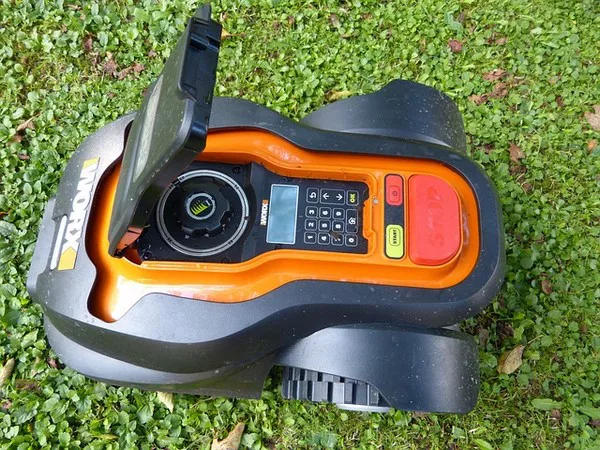In the realm of lawn mowers, efficiency, reliability, and performance are paramount. One crucial component that significantly influences these factors is the type of engine powering the mower. Among the various engine designs, OHV (Overhead Valve) engines stand out for their efficiency, power, and durability. In this comprehensive guide, we delve into the workings of OHV engines, exploring their mechanisms, advantages, and applications in lawn mowers.
Understanding OHV Engines
OHV engines are a type of internal combustion engine where the valves responsible for intake and exhaust are positioned above the combustion chamber. This design contrasts with the traditional flathead engines where valves are located within the engine block itself. The overhead valve configuration allows for a more efficient airflow, resulting in improved combustion and overall performance.
Mechanism of OHV Engines
The fundamental components of an OHV engine include the cylinder block, cylinder head, camshaft, valves, and pushrods. The camshaft, typically located within the engine block, is responsible for operating the valves. In an OHV engine, the camshaft is positioned within the cylinder block, while the valves are situated in the cylinder head.
During operation, the camshaft rotates, causing the lifters to move the pushrods up and down. This action transfers the motion to the rocker arms, which then open and close the intake and exhaust valves. The overhead valve configuration allows for precise control of valve timing and lift, optimizing the engine’s performance across various operating conditions.
Advantages of OHV Engines
OHV engines offer several advantages over their flathead counterparts, making them the preferred choice for many lawn mower manufacturers and users:
Improved Fuel Efficiency: The overhead valve design promotes better combustion efficiency by providing a more direct path for the air-fuel mixture into the combustion chamber. This results in reduced fuel consumption and lower operating costs over time.
Enhanced Power Output: The efficient airflow and combustion facilitated by OHV engines contribute to higher power output compared to flathead engines of similar size. This extra power translates to improved cutting performance and faster mowing speeds.
Durability and Reliability: OHV engines are known for their robust construction and longevity. The overhead valve configuration minimizes wear and tear on critical engine components, resulting in extended service life and reduced maintenance requirements.
Quieter Operation: OHV engines tend to operate more quietly than their flathead counterparts due to reduced mechanical friction and smoother valve operation. This quieter operation enhances the user experience and minimizes noise pollution in residential areas.
See Also What Is A 4 Cycle Lawn Mower
Applications in Lawn Mowers
OHV engines find widespread use in various types of lawn mowers, including push mowers, self-propelled mowers, and riding mowers. Their combination of power, efficiency, and reliability makes them ideal for tackling the demands of residential and commercial lawn care:
Residential Lawn Mowers: Many homeowners prefer lawn mowers equipped with OHV engines for their ability to deliver consistent performance and easy starting. Whether it’s a small push mower for a modest yard or a self-propelled model for larger properties, OHV engines offer the power and efficiency needed to maintain a well-manicured lawn.
Commercial Lawn Care Equipment: Landscaping professionals and groundskeepers often rely on OHV-powered lawn mowers to handle the rigors of commercial lawn maintenance. These engines provide the necessary power and durability to tackle extensive mowing jobs day in and day out, ensuring efficient operation and professional results.
Riding Mowers and Zero-Turn Mowers: OHV engines are also commonly found in riding mowers and zero-turn mowers, where their superior power and torque capabilities are especially valuable. Whether maneuvering around obstacles or cutting large swathes of grass, these engines deliver the performance and reliability required for heavy-duty applications.
Maintenance and Care
To ensure optimal performance and longevity, proper maintenance of OHV engines is essential. Regular maintenance tasks include:
Oil Changes: Regularly changing the oil and oil filter helps keep the engine lubricated and free of contaminants, extending its service life.
Air Filter Replacement: Clean air filters are crucial for maintaining proper airflow and combustion efficiency. Replace the air filter according to the manufacturer’s recommendations to prevent debris buildup and engine damage.
Spark Plug Inspection: Check the spark plug periodically and replace it if worn or fouled. A properly functioning spark plug is essential for efficient ignition and engine performance.
Valve Adjustment: Some OHV engines may require periodic valve adjustments to ensure proper valve clearance and optimal performance. Refer to the engine’s manual for specific adjustment procedures and intervals.
Conclusion
OHV engines represent a significant advancement in internal combustion engine technology, offering superior performance, efficiency, and reliability compared to traditional flathead designs. In the realm of lawn mowers, OHV engines have become the standard choice for both residential and commercial applications, thanks to their ability to deliver consistent power and durability. By understanding the mechanisms and advantages of OHV engines and implementing proper maintenance practices, lawn mower enthusiasts can enjoy years of reliable performance and pristine lawn care results.

